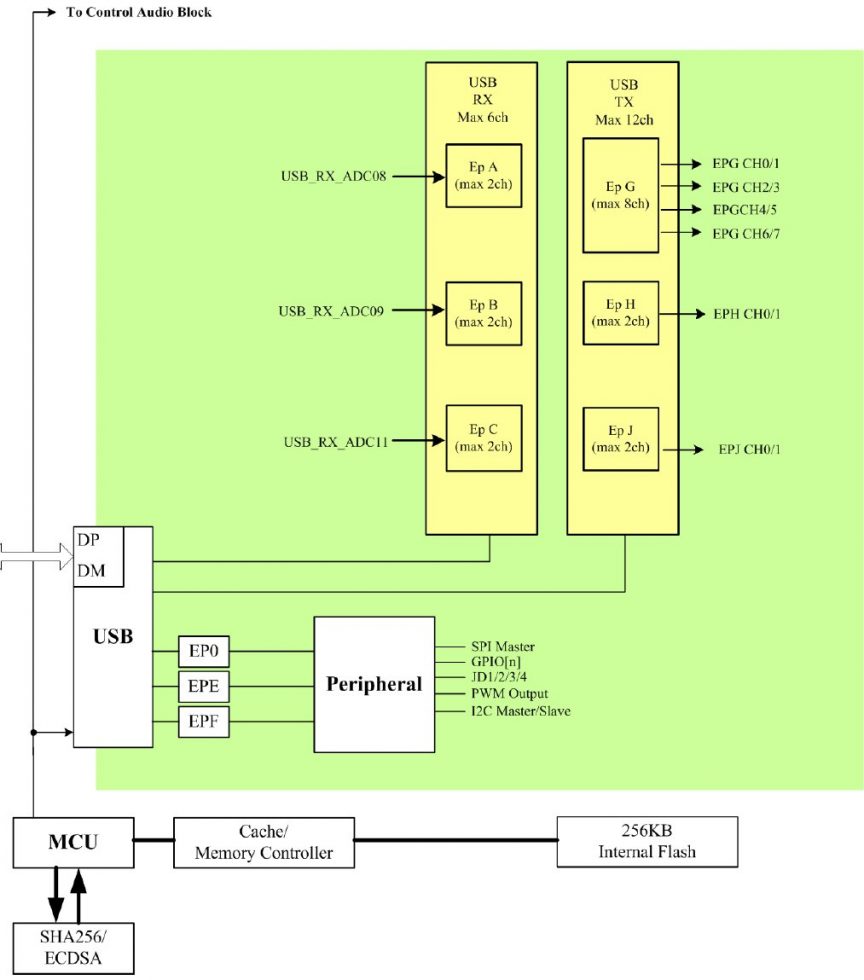You can find the Realtek ALC4080/4082, which was already launched in 2020, as a sound solution on many new Intel boards of the middle and upper class and due to a certain feature, which is also due to the saving of Intel SKUs, you get new problems at the same time. The problems with the SPDIF (optical output), which have already been fixed by a firmware or software update, are not the only reason for users to complain. The real problem, and here the patch from Realtek was surely only a first cosmetic, is much deeper.
But what actually distinguishes such an ALC4080 from its predecessors? It’s still the usual single-chip solution, but now uses a USB 2.0 controller for the high-performance audio codec instead of the bi-lingual interface on the ALC1220/1200. For USB audio, it supports a standard HID-class USB audio device designed for PC motherboards and multi-channel audio systems/devices in all major commercial operating systems. It offers ten DAC channels supporting simultaneous 7.1-channel playback, plus two channels of independent stereo output (multiple streaming) via the front-panel stereo output. It also features a Direct Stream Digital (DSD) decoder. Sound-wise, it’s definitely not an advance, just an adjustment in how the chip is connected. Interface cinema, instead of evolution in sound.
The problem is probably on the motherboard
Now we come to the actual problem, namely the dropouts, sporadic volume changes and even a (rather rare) unmotivated “pop” when the volume control is set above 50%. Here I have used my manufacturer contacts and asked directly to the producers and their development departments. If you believe the first findings of the FAE (Field Application Engineer) involved everywhere, the problem even lies outside the audio chip, namely in the MCU (Micro Controller Unit), which is responsible for the RGB effects of the individual components.
For example, initial testing showed that motherboards that offer complete disabling of RGB functionality in the BIOS no longer experienced the problem without RGB. The same was true for boards where you can completely disable RGB via switch. Another workaround, according to the manufacturer, is to synchronize all effects via software, e.g. RAM, motherboard and the aRGB headers. If all outputs use the same effects, the problem should occur less often or not at all. Here, the motherboard manufacturers are now also working on a possible solution together with the manufacturer of the MCU in question for the RGB control.
And of course we’ll stay tuned and report further….
Disclaimer: This article is machine translated from the original German, and has not been edited or checked for errors. Thank you for understanding!
Source: own

































26 Antworten
Kommentar
Lade neue Kommentare
Urgestein
Veteran
Urgestein
Urgestein
Urgestein
Urgestein
Neuling
Neuling
Urgestein
Neuling
Mitglied
Urgestein
Veteran
Urgestein
Mitglied
Urgestein
Mitglied
Urgestein
Alle Kommentare lesen unter igor´sLAB Community →